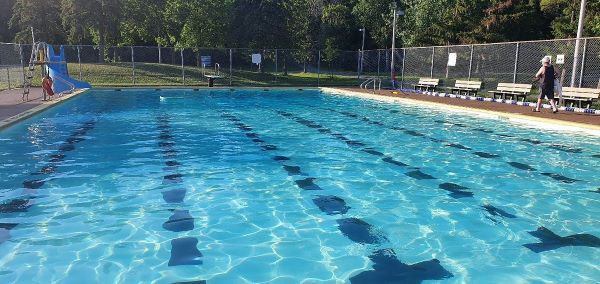
Aquatic Therapy at home and in the community – how to make the most of pools near you!
Here at LiquidGym, we’re fortunate to provide a state-of-the-art aquatic therapy facility to our patients/clients in order to help get them back to the activities they love doing.
In the past, clients have often asked:
“I have access to a pool near me. Can I train in the water at home?”
Short answer: Absolutely! Let’s talk about how.
There are several ways to make great use of pools near you, whether they are backyard pools, recreational pool facilities, waterfront beaches or even hot tubs. But first, let’s consider a few key properties unique to working in the water.
Why is water so effective? – 3 key properties
- Hydrostatic pressure
- Pressure from immersion in water on the body increases with depth – this can help reduce swelling and pain (especially in the feet and joints of the lower limbs) and improve blood flow
- Buoyancy and reduced impact
- Offloading sore joints from vertical impact helps reduce pain, reduce swelling, and avoid compounding degenerative changes over time
- Viscosity
- Water resistance increases the challenge of motion in all planes of movement simultaneously, helping prevent muscular imbalance and thus promoting greater joint stability
- The feedback water resistance provides ensures a safer environment to challenge coordination for those looking to improve their balance
“That all sounds great. Will I need any special equipment to train in the water at home?”
No! Swimming laps, water walking with the water waist to chest deep, bodyweight exercises in the shallow end, or treading water are all easily done without equipment. However, the following optional list of equipment can allow for a greater variety of exercises at home:
Flutter board
Pool noodle
Beach ball
Resistance bands
Dumbbells
Webbed gloves
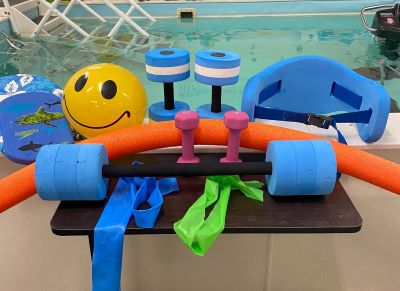
Recreational Outdoor Pools – 9 outdoor pools in Ottawa
For more formal exercise programs – typically led by a certified instructor – recreational pools are an excellent option to obtain all the benefits of working in the water and are often performed in a more social group setting. Lane swimming offerings are also a fantastic way to improve your cardiovascular fitness. Any of the exercises mentioned in the home pool section above can similarly be used here.
Link to the City of Ottawa Outdoor Pools
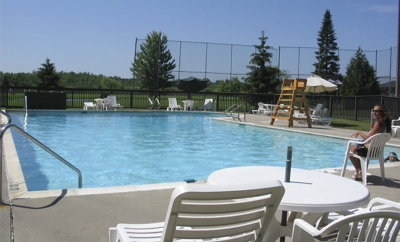
Ottawa Water Front Beaches
The City’s beaches at Mooney’s Bay, Westboro, Britannia and Petrie Island are now open for supervised swimming and water related activities.
Link to the City of Ottawa Water Front Beaches
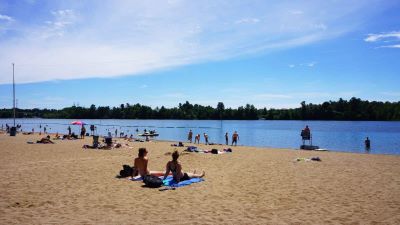
Hot tubs
Muscles, tendons, and other elastic tissues in the body respond best to stretching when they are warm and pliable, meaning the hot tub is an ideal place to incorporate a few flexibility-specific exercises into your routine. Due to the high heat, cardio and strength exercises should be avoided here, however.
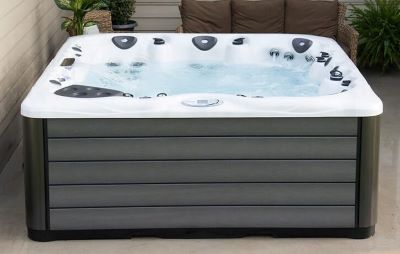
Hydrotherapy Exercises at Home
In our next blog “Hydrotherapy Exercises at Home” publication date June 29,2021, we’ll outline some sample exercises to get you started in the water!
FAQ
“Is training in the water right for me?”
Before starting, it is highly recommended discussing with your family doctor or specialist to determine if aquatic training is appropriate for you. Safety is paramount – some who may not be advised to perform water programs unsupervised include, but are not limited to, those with:
- Pre-existing heart conditions
- Balance difficulties making safe entry and exit from a pool challenging
- Multiple sclerosis (potential for overheating)
- Unhealed wounds or active infections.
If you have any concerns, it’s always best to consult a medical professional for clearance prior to starting a water-based program.
Resources:
Brody, Lori Thein, and Paula Richley Geigle, editors. Aquatic Exercise for Rehabilitation and Training. Human Kinetics, 2009.
Layne, Melissa. Water Exercise. Human Kinetics, 2015.
Author:
Gavin Parsons
Physiotherapist